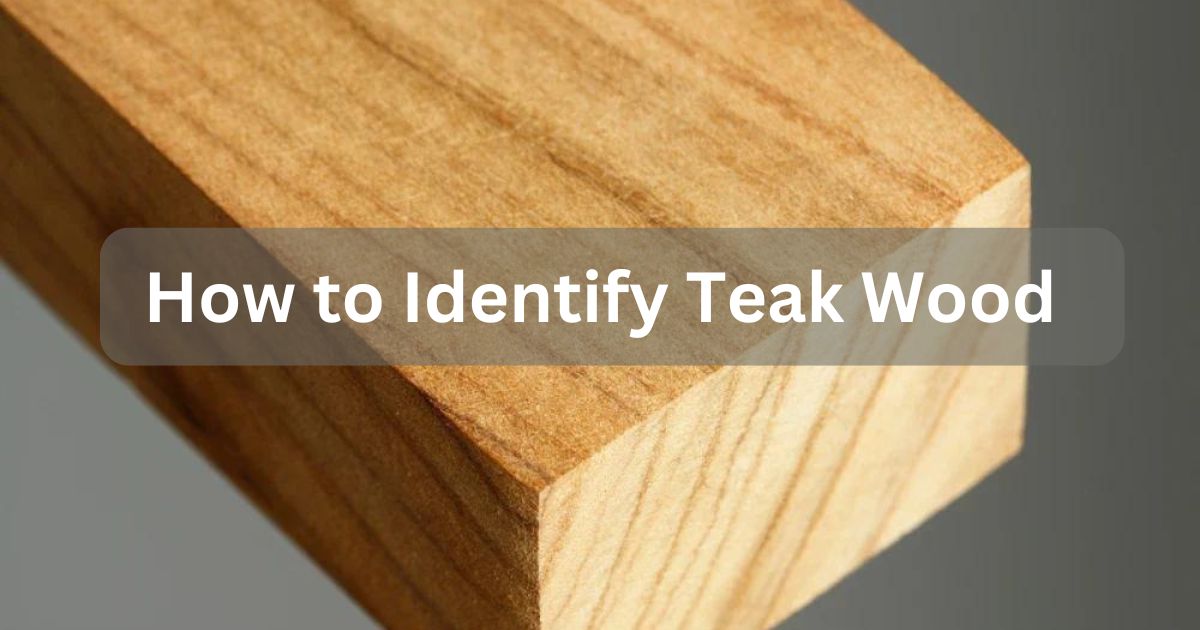How to Identify Teak Wood

Teak wood is highly regarded for its durability, strength, and aesthetic appeal. However, identifying genuine teak wood can be tricky due to the presence of several look-alike species. This blog will guide you through the key characteristics that make teak wood unique, from its color and grain patterns to its common uses.
Color and Grain Patterns: Recognizing Teak Wood's Unique Appearance
Teak wood is known for its warm, golden-brown hue, which can darken over time to a rich, brownish shade. When freshly cut, the heartwood appears golden or medium brown, while the sapwood is often pale yellow or white. This natural variation in color helps in identifying teak wood, especially when it has been untreated.
The grain of teak wood is straight, though it can occasionally show wavy patterns. Teak has a coarse texture with an oily or greasy feel, thanks to its natural oils. These oils give it a smooth surface that’s easy to spot, and they also protect it from water damage. Look for even grain patterns combined with a smooth, oily touch when identifying teak wood.
Durability and Hardness: Evaluating Teak Wood's Strength
Teak is celebrated for its exceptional durability, making it a popular choice for outdoor furniture and structures. It is naturally resistant to rot, decay, and insect infestation due to its high oil content, which acts as a natural preservative. This durability makes it especially valuable in environments exposed to harsh weather conditions.
Teak is also relatively hard, rating around 1,070 on the Janka hardness scale. This strength contributes to its longevity and makes it a preferred material for high-traffic areas like flooring. If you notice a piece of wood that has withstood wear and tear remarkably well over the years, it is likely teak.
Smell and Texture: Sensory Clues for Identifying Teak Wood
Another unique characteristic of teak wood is its distinctive smell. Freshly cut teak emits a leathery, slightly oily scent. This smell comes from the natural oils embedded in the wood, which also help protect it from moisture and insects. The scent is not overpowering but can be a telltale sign when identifying the wood.
In terms of texture, teak wood is smooth and greasy to the touch. This oiliness helps it repel water, making teak a popular choice for outdoor applications. The texture remains relatively consistent, even after sanding or polishing, making teak easy to work with and finish.
Common Uses of Teak Wood: Identifying Through Application
Teak wood’s applications are a great way to identify it. It is commonly used in furniture, especially for outdoor pieces like garden tables and chairs. Its water-resistant qualities make it ideal for yacht decking, boat building, and patio furniture.
In construction, teak is used for door frames, window frames, and beams due to its strength and resistance to harsh weather conditions. Teak flooring is also common, particularly in high-end homes and commercial spaces that require durable and attractive surfaces.
When you see wood used in these high-stress or outdoor environments, it’s a good indicator that you might be looking at teak. This is especially true for well-maintained wood that retains its beauty and function over long periods.
MROkart
At MROkart, you can find top-quality teak care products to help preserve and enhance your teak wood investments, ensuring they continue to provide beauty and durability.

